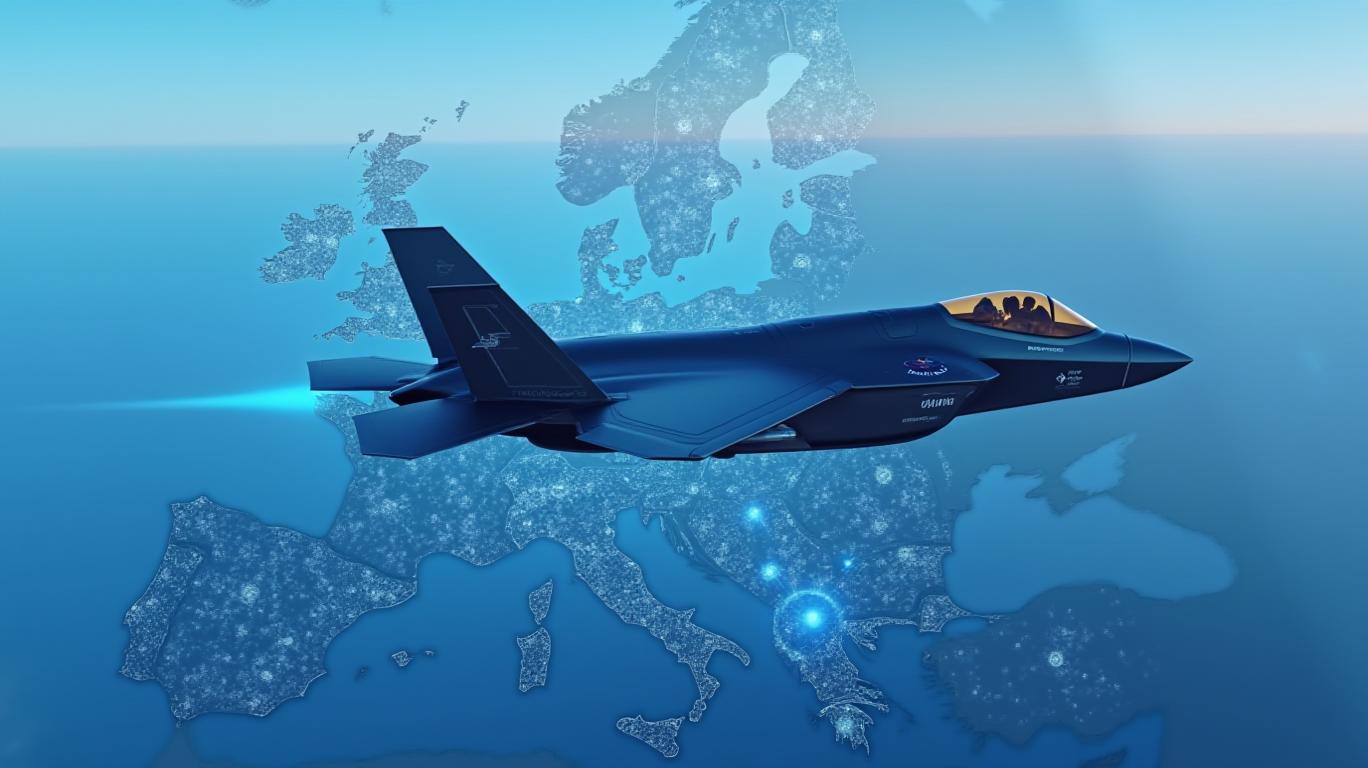Lockheed Martin’s DAGGR-2: The Open-Systems Gateway to Multi-Domain Dominance
The global defense landscape is undergoing a seismic shift. As geopolitical tensions escalate and adversaries like Russia and China prioritize asymmetric warfare, NATO allies are racing to modernize forces with systems that deliver real-time, cross-domain dominance. Enter Lockheed Martin’s DAGGR-2, a breakthrough technology that transforms the F-35 into a networked combat hub, enabling seamless data sharing across air, sea, land, and cyber domains. For investors, this is a defensive growth opportunity of historic proportions—a technology that not only solidifies Lockheed’s (LMT) position as a leader in multi-domain defense contracting but also creates a decades-long revenue stream as NATO allies scramble to adopt interoperable systems.

The DAGGR-2 Revolution: Open Architecture as a Force Multiplier
DAGGR-2’s real-time data-sharing capabilities are a strategic game-changer. Unlike proprietary systems like Russia’s Su-57 or China’s J-20, which isolate platforms within closed ecosystems, DAGGR-2 leverages open architecture to bridge gaps between legacy and modern systems. This allows F-35s to share classified sensor data—ranging from radar feeds to infrared tracking—with older aircraft (e.g., F-16s), naval vessels, and even future unmanned systems.
The May 2025 Danish demonstration—where F-35s in Texas transmitted real-time data to Denmark via commercial satellites—proves DAGGR-2’s scalability and cost efficiency. By using affordable commercial networks (e.g., Starlink), NATO allies avoid the prohibitive costs of dedicated military satellites, reducing integration expenses for smaller nations. This is critical as over 600 F-35s are projected in Europe by 2035, each a potential node in a continent-wide DAGGR-2-enabled network.
Why NATO Allies Are Betting on DAGGR-2
- Interoperability at Scale: DAGGR-2’s support for protocols like MADL, TTNT, and Link-16 ensures seamless integration with NATO systems. Denmark’s success—10 of 27 F-35s operational by mid-2025—serves as a blueprint for allies like Belgium, Finland, and Poland, which are accelerating F-35 acquisitions to counter Russian aggression.
- Stealth Meets Connectivity: The F-35’s stealth capabilities allow it to penetrate contested airspace undetected, while DAGGR-2 turns it into a real-time data node, sharing intelligence with non-stealth platforms. This creates a force multiplier effect, where a single F-35 can enhance the combat effectiveness of an entire fleet.
- Reduced Integration Costs: Open architecture eliminates the need for costly custom middleware. Clients like Denmark can plug DAGGR-2 into existing systems without overhauling infrastructure, a critical advantage for budget-constrained nations.
The Geopolitical Tailwind: Multi-Domain Operations (MDO) as a Strategic Imperative
Adversaries are no longer fighting on single battlegrounds. Russia’s hybrid warfare in Ukraine and China’s “gray zone” tactics demand multi-domain coordination. DAGGR-2’s ability to fuse data across domains—air, sea, space, and cyber—positions Lockheed as the go-to partner for NATO’s MDO modernization.
Consider the Indo-Pacific theater: U.S. F-35s equipped with DAGGR-2 could share targeting data with Aegis-equipped destroyers or Patriot missile batteries in real time, creating a unified defense grid. For Lockheed, this opens a $200+ billion market opportunity as allies invest in interoperability.
Risks? Yes. But the Upside Outweighs Them
Critics highlight vulnerabilities in commercial satellites, which are susceptible to jamming or cyberattacks. However, DAGGR-2’s encryption protocols (though undisclosed) are likely state-of-the-art, and the system’s cost efficiency and scalability far outweigh these risks.
Moreover, Lockheed’s legacy of innovation—from the SR-71 Blackbird to today’s DAGGR-2—ensures it can adapt to threats. The company’s 2025 revenue of $60+ billion, driven by F-35 production and modernization contracts, underscores its financial resilience.
The Investment Thesis: LMT as a Defensive Growth Stock
Investors seeking stability amid geopolitical volatility should act now. DAGGR-2’s success ensures recurring revenue streams:
- F-35 fleet growth: 1,170+ jets operational globally by 2025, with upgrades and maintenance contracts.
- Open architecture licensing: DAGGR-2’s modular design allows Lockheed to monetize its IP across platforms.
- NATO modernization: Over $1 trillion in projected defense spending through 2030, with interoperability as a top priority.
Lockheed Martin is not just a defense contractor—it’s the architect of 21st-century warfare, turning data into decisive advantage. With a dividend yield of 3.2% and a track record of 15%+ annual revenue growth in defense tech, LMT offers both income and growth.
Final Call to Action: Secure Your Position in Multi-Domain Dominance
The stakes are clear: In a world where data is the ultimate weapon, DAGGR-2 gives NATO allies the edge to outthink, outmaneuver, and outfight adversaries. For investors, Lockheed Martin’s leadership in this space is irreplaceable.
Act now before the market fully prices in DAGGR-2’s potential. This is not just an investment in a stock—it’s a stake in the future of global defense.
JR Research Disclaimer: This article is for informational purposes only. Always conduct independent research and consult a financial advisor.

Comments
No comments yet